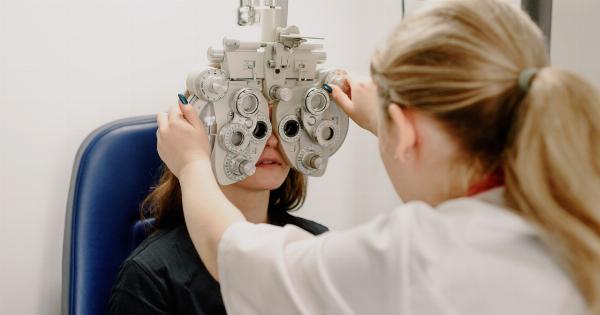Macular degeneration is a condition that affects the retina and can cause significant vision loss. The macula is part of the retina, and it is responsible for central vision, which allows us to see fine details and colors.
When the macula is damaged, it can cause a loss of central vision and make it difficult to see objects directly in front of us. Early detection of macular degeneration is key to preventing the condition from progressing and preserving vision. Here’s what you need to know about detecting the symptoms of macular degeneration.
1. Blurred Vision
One of the most common symptoms of macular degeneration is blurred vision. This can make it difficult to read or see fine details, and it may be more noticeable when looking straight ahead.
Blurred vision may also be accompanied by a haziness or cloudiness in the central vision or a blind spot in the center of the visual field.
2. Distorted Vision
Another symptom of macular degeneration is distorted vision. This can cause straight lines to appear wavy or crooked, and it may make it difficult to recognize faces or other objects.
Distorted vision is caused by a distortion of the macula, which can occur as the condition progresses.
3. Reduced Color Perception
Macular degeneration can also cause a reduction in color perception. This can cause colors to appear faded or less vivid than they once were, and it may be more noticeable in bright light.
Reduced color perception is a result of damage to the cones in the retina that are responsible for color vision.
4. Blind Spot
A blind spot in the central visual field is another symptom of macular degeneration. This can make it difficult to see objects directly in front of you, and it may be more noticeable when reading or looking at a screen.
A blind spot can occur because of a loss of cells in the macula that are responsible for central vision.
5. Difficulty Adjusting to Low Light
People with macular degeneration may also have difficulty adjusting to low light. This can make it difficult to see in dimly lit environments, and it may be more noticeable when transitioning from a bright environment to a dark one.
The reason for this is that the macula is responsible for fine detail and color vision, which is less important in low light conditions.
6. Difficulty Recognizing Faces
As the condition progresses, people with macular degeneration may have difficulty recognizing faces. This is because the macula is responsible for fine details, which are important for recognizing people.
When the macula is damaged, faces may appear distorted or blurry, making them difficult to recognize.
7. Sensitivity to Bright Light
Sensitivity to bright light is another symptom of macular degeneration. This can cause discomfort or pain when exposed to bright light, and it may be more noticeable in people with advanced macular degeneration.
Sensitivity to light is usually caused by damage to the cones in the retina that are responsible for color vision.
8. Double Vision
Double vision is a less common symptom of macular degeneration, but it can occur in some cases. This can make it difficult to see clearly and can cause confusion or disorientation.
Double vision is caused by a misalignment of the eyes, which can occur as a result of damage to the macula.
9. Seeing Shadows
Some people with macular degeneration may also see shadows or dark spots in their vision. This can be particularly noticeable when looking at a bright background, and it may be a sign of advanced macular degeneration.
Shadows or dark spots can occur as a result of damage to the cells in the macula that are responsible for central vision.
10. Straight Lines Appear Curved
Another symptom of macular degeneration is the appearance of straight lines as curved or wavy. This can be particularly noticeable when looking at grid patterns or reading material with lines.
The distortion of straight lines is caused by a distortion of the macula, which can occur as the condition progresses.
Early detection of macular degeneration is essential for preventing the condition from progressing and preserving vision. If you experience any of these symptoms, it is important to see an eye doctor for a comprehensive eye exam.
Treatment options for macular degeneration depend on the severity of the condition and may include lifestyle changes, medications, or surgery.



























